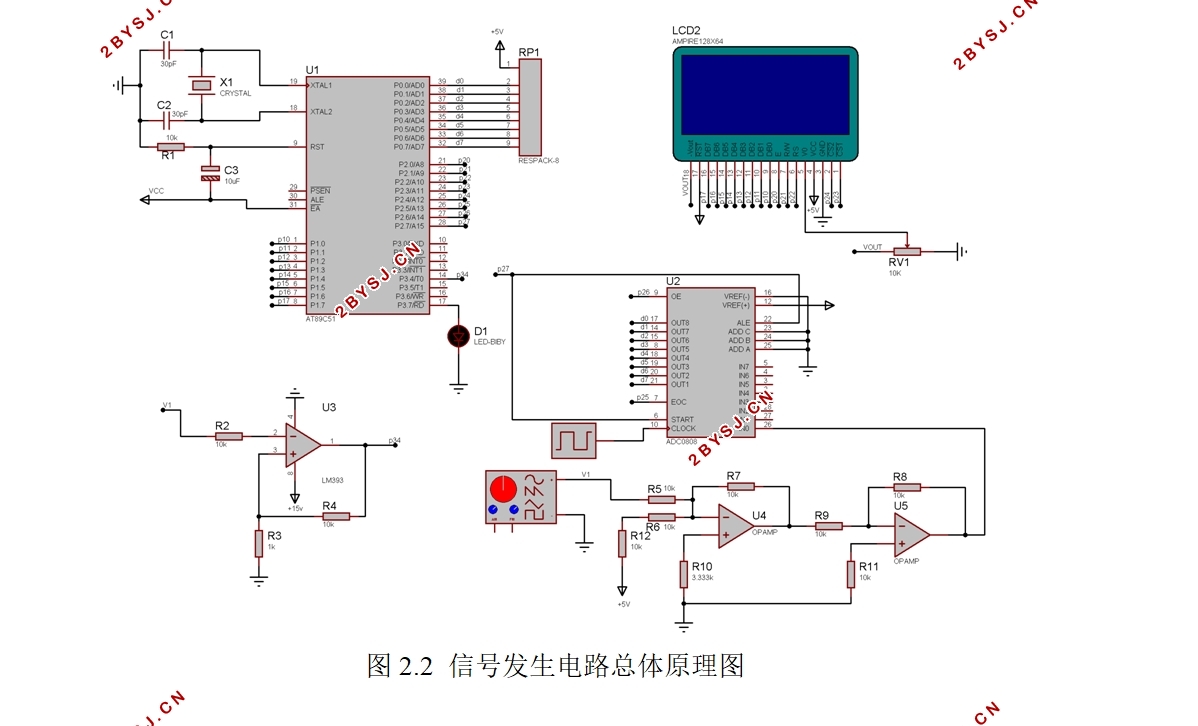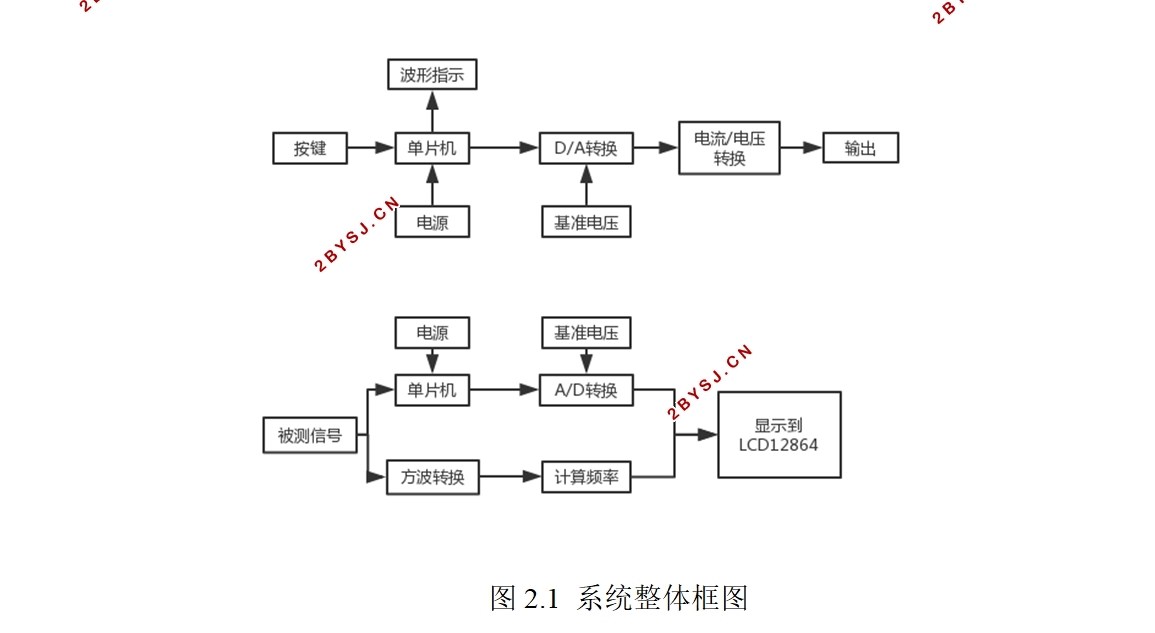数字合成信号发生器的设计
无需注册登录,支付后按照提示操作即可获取该资料.
数字合成信号发生器的设计(任务书,开题报告,论文13500字)
摘要
信号发生器作为一种信号源,在电子领域是必不可少的测量工具。功能主要是产生各种测试信号,给被测电路提供所需要的信号,以满足测量或者各种实际需求。在科研实验和教学等方面应用十分广泛。
目前我国在信号发生器方面取得了很多成果,但总的来说,还没有形成一个真正的产业,与国外同类产品仍然存在较大的的差距,因此加紧对这类产品的研制显得迫在眉睫。
本系统是基于单片机的数字合成信号发生器,具有输出正弦波、方波、三角波、锯齿波,幅值频率可调的功能,并且可以进行波形识别和频率测量。整体包括数模转换电路(DAC0832和ADC0808),运放电路,按键和液晶显示屏模块等。通过键盘控制四种波形的产生,改变频率和幅值,并在液晶屏上显示对应信息,实现功能丰富、方便快捷的特点。
关键词:单片机;信号发生器;波形识别;频率测量
Abstract
As a signal source, signal generator is an indispensable measurement tool in the field of electronics. The function is mainly generating various test signals to provide the required signals to the circuit under test to meet the measurement or various practical needs. It is widely used in scientific research experiments and teaching.
At present, China has made many achievements in signal generators. However, in general, it has not yet formed a real industry. There is still a big gap with similar foreign products. Therefore, it is urgent to step up the development of such products.
The system is a digital composite signal generator based on single-chip microcomputer, which has the functions of outputting sine wave, square wave, triangle wave, sawtooth wave, adjustable amplitude and frequency, and can perform waveform recognition and frequency measurement. The whole includes digital-to-analog conversion circuits (DAC0832 and ADC0808), op amp circuits, buttons and LCD modules. Control the generation of four waveforms through the keyboard, change the frequency and amplitude, and display the corresponding information on the LCD screen to achieve the purpose of human-computer interaction.
Key Words:Single chip microcomputer;Signal generator;Waveform recognition;Frequency measurement



目录
摘要 I
Abstract II
第1章绪论 1
1.1 研究背景及意义 1
1.2 研究现状 1
1.3 论文结构和内容 2
第2章硬件电路设计 3
2.1 仿真调试技术 3
2.2 系统方案和框图 3
2.2.1 总体方案 3
2.2.2 工作原理 3
2.3 信号发生电路 5
2.3.1 单片机最小系统 5
2.3.2 D/A转换原理及其参数指标 7
2.3.3 DAC0832芯片介绍 7
2.3.4数模转换模块 9
2.3.5显示模块 10
2.4 波形检测和频率测量 10
2.4.1 方波转换模块 10
2.4.2 A/D转换原理及参数指标 11
2.4.3 ADC0808芯片介绍 11
2.4.4 模数转换模块 12
2.4.5 显示模块 14
2.4.6 LED报警模块 15
第3章软件 16
3.1 中断 16
3.2 Keil介绍 17
3.3 信号发生电路 17
3.3.1 设计思想 17
3.3.2 流程图 18
3.3.3 参数计算 18
3.4 波形检测和频率测量 21
3.4.1 设计思想 21
3.4.2 流程图 22
3.4.3 参数计算 22
第4章设计仿真 25
4.1 信号发生器仿真结果 25
4.2 波形检测和频率测量仿真结果 28
第5章实物制作 30
5.1 信号发生电路 30
5.2 波形识别、频率测量电路 31
第6章结论 33
6.1 收获与成长 33
6.2 不足与展望 33
参考文献 34
致谢 35
附录A原理图 36
附录B代码 37
